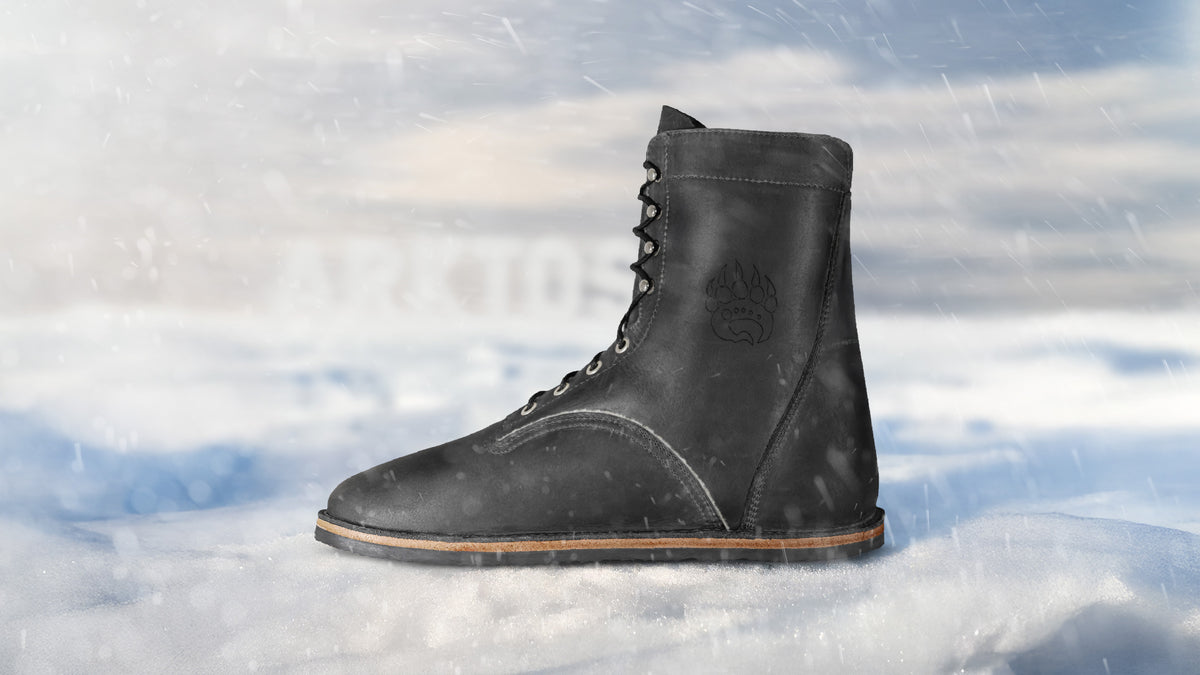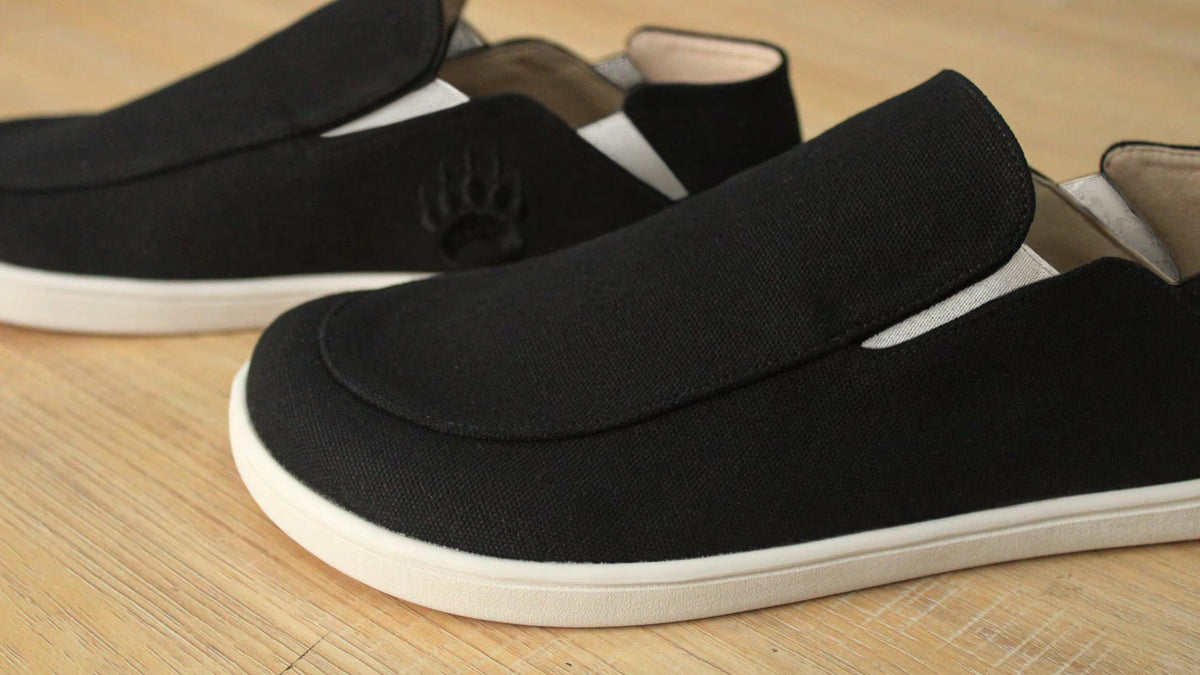Shoe Construction, or Body Destruction?
Written by: John Baker and Lily Hoog-Fry
If you’re like us then you make apparel choices primarily based on function, fashion isn’t the biggest factor. Now, we understand that there are situations where fashion reins king, but function should always dictate form in most situations we find ourselves in. That is to say, the desired outcome should dictate materials and design.
If you show up to a rally car race with a NASCAR car, you can expect to lose; if you wear a shoe principally designed with fashion in mind, you can expect to develop some dysfunction.
It’s important to choose footwear that allows your feet to function optimally. They are at the forefront of your interactions with the world and dictate how the rest of our body orients itself. In short, functional footwear will increase your ability to perform your best and reduce wear and tear throughout the whole body. On the other hand, dysfunctional footwear will slap you across the face with poor performance and leave you with a body full of aches and pains.
Ankle, Knee and Hip Dysfunction/Disability in Our Time
The CDC currently states that 21% of adults in the United States experience pain in the foot, knee, or hip. If this number seems large we have bad news. The CDC breaks this average down by reporting that 29% of individuals aged 30-44 years experience pain in the foot, ankle, knee and/or hip, as well as 43% of those aged 45-64 years, and 50% of those aged over 65 years (Lucus et al, 2021). Notice the trend?
The bad news is… the prevalence of back pain is even worse!
- 28% of Individuals aged 18-29 years old reported back pain.
- 35% of Individuals aged 30-44 years reported back pain.
- 44% of individuals aged 45-64 years reported back pain
- 45% of those over 65 years reported back pain (Lucus et al, 2021).
As you can see, this is a MAJOR problem that the everyday person, and the United States Healthcare system face. Some of the factors that go into pain generation in these areas are a bit out of our control at the moment. For example, we have no idea how to solve a high incidence of automobile crashes (other than just stop using cars, which isn't happening), nor do we have any way to affect individual genetic variation for risk of disease or even aging.
However, we know a thing or two about shoes, our feet, and how that contributes to pain!
The Sole of Modern Shoes
There are several different methods and materials used when making conventional footwear. The most prominent materials are EVA (Ethylene-Vinyl Acetate), Polyurethane, Air Cushioning, and Foam Cushioning. All of these have their unique properties, which dictate their application and use.
EVA is fairly lightweight and flexible…
Sounds pretty good so far, but it isn’t. It is commonly used in midsole construction in athletic shoes. However, it has a pretty lackluster lifespan, which will result in it wearing down and deforming much sooner than some of the other options out there. This doesn’t mean you get a more barefoot shoe, but actually the opposite.
When this material wears down it causes the ankle to slope, exaggerating an already biomechanically unsound position. This is because it essentially begins to act more like an angled wedge underneath your foot rather than a flat, symmetrical, and stable surface. In turn, this causes harmful displacement of the knee, hip, pelvis, spine, and upper body (Chen et al, 2020) (Reutimann et al, 2022) (Huang et al, 2020).
Polyurethane is denser and more durable...
This allows it to resist wear and tear longer and in theory, keeps your feet (and wallet) happier over a longer period. However, it is also a more rigid construction, which studies show increases the amount of stress and force (contact force, bending force, and torsional force) placed on the hip joint (not musculature) during movement (Palmowski et al, 2021) (Malisoux et al, 2022).
This means that this material is not advantageous for individuals with a previous history of hip pain or dysfunction or for anybody trying to avoid hip pain and dysfunction in the future.
Air Cushioning utilizes a series of air pockets to provide cushion and support…
But, like other materials used in shoe construction, has been shown to lose its shape over time. Although, because the air pockets do have more durable external scaffolding, its effects on posture as it breaks in may be less than some of the other shoe materials used.
Foam cushioning is often used for insole comfort...
Because an insole is usually thin, when it wears down non-uniformly, it will produce less detrimental effects on posture and body positioning than some of the other, thicker materials over time. However, because it is typically used in conjunction with an outer-sole that is constructed of another material, it may actually increase the overall detrimental effects compared to if it wasn’t used at all. It will essentially create a situation in which and foot has to try to orient itself to two uniquely unstable and deformed surfaces stacked on top of each other.
Not So Cushy, It’s Just a Bunch of Fluff
It turns out that cushioning may have a paradoxical relationship with safety. We aren’t talking about when it gets worn down and deformed anymore, but when the cushion is new and seemingly able to provide uniform dampening of forces and load.
As it turns out, all of that cushion is just for looks. Some studies have shown that cushioning leads to an increase in stress on the body and its joints. This is because it forces us to move in more unnatural and potentially harmful ways in which we can’t use the natural spring mechanisms to decrease joint loading.
We are essentially falling on our feet and hoping the less than 1-inch cushion we reach for in our shoes is enough to overcome the harmful forces, some are dispersed on average 5 ½ feet (height of individual) away from the shoe itself. Ever wonder how you have experienced neck pain despite not being able to remember using your neck?
Relying on the shoe’s cushion is like trying to stop a freight train with a ping-pong paddle. In essence, the research suggests that it is much more effective to learn to move properly than it is to increase the cushion between you and the surface that you are moving upon (Robbins & Waked, 1997) (Kulmala et al, 2018) (Leiberman et al, 2010) (Lam et al, 2018).
Here’s the Takeaway
Of course there are some conditions where cushioning may be initially relieving. However, over the long haul, turning to cushioning for your foot, ankle, knee and hip pain is like taking an aspirin for your headache – helpful in the moment, but not really addressing the underlying weakness or gait issues that caused the pain. By adding the commonly reached for so called “helpful” cushioning we actually create a feed-forward cycle of foot deformation, foot weakness and upstream pain.
Next we will dive into how exactly cushion, heels and hard soles change the mechanics of our spine and why this might actually be the cause of those headaches.




























